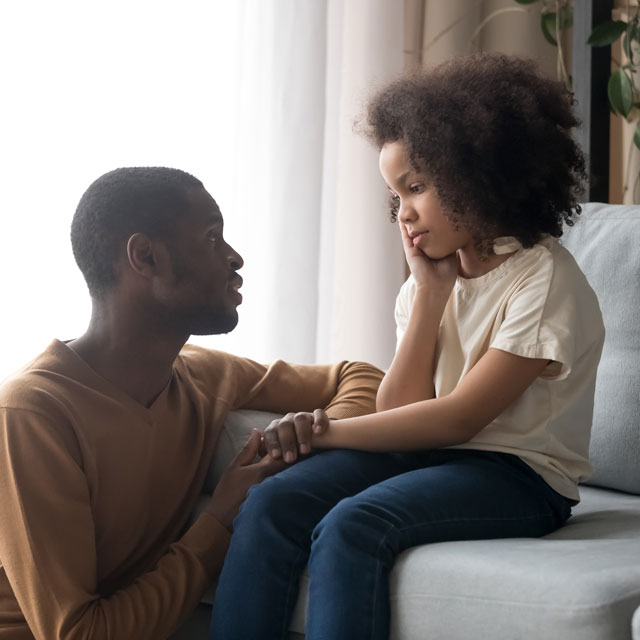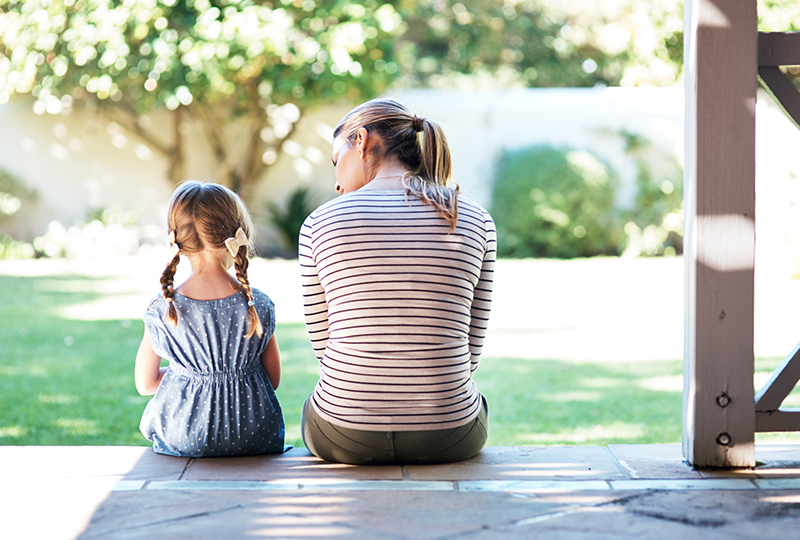When bad things happen, most kids bounce back. But some may have emotional or behavioral changes along the way. Here are 14 ways your child might react as a trauma response.
When a traumatic event happens to a child, they may have different trauma responses. The adults around them might be surprised by some of these emotional responses and behaviors or possibly not connect them to childhood trauma.
Michelle Reising, PhD, a pediatric psychologist at Monroe Carell Jr. Children’s Hospital at Vanderbilt, said the good news is that most children’s trauma response is to react with resilience or recovery. However, a child may still show signs of emotional or behavioral changes after the incident.
“When children are processing trauma, the adults around them might hope they will talk about their problems, but children, especially younger children, often express themselves in other ways,” Dr. Reising said. “Parents, teachers and caregivers can prepare themselves with knowledge and recognize these emotional and behavioral difficulties for what they are: a form of expression and part of the healing process. Kids experiencing these challenges need support, not punishment.”
How kids react to trauma
Reising listed the following common trauma responses in children:
- Feelings of sadness, irritability, anger, helplessness or anxiety.
- Moments of intense distress.
- Emotional numbing or not feeling much at all.
- Behavioral difficulties (especially in young children).
- Difficulty sleeping.
- Loss of appetite.
- Intrusive, unwanted thoughts or memories about the event (Ex. You may notice it in the child’s play or frequent questions about the event).
- Strong reactions to reminders of the event.
- Avoidance of people, places or situations related to the event (Ex. The child may not want to go to school or may not want to talk about the event).
- Regression in developmental milestones in young children (Ex. Losing progress with potty training).
- Difficulties with concentration or “blanking out” at times.
- Physical restlessness or feeling “on edge.”
- Social withdrawal.
- Increased complaints of aches and pains (Ex., headaches, stomachaches).
Reising said this list is not exhaustive, and that there could be other ways a child might express themselves.
“It’s important to emphasize that there is no ‘right’ way to grieve,” Reising said. “Everyone has different ways of processing unthinkable events, and acceptance of the child’s – and your own – emotional reactions is important.”
How might children’s reactions change over time?
In addition, Reising said that a child’s trauma response will likely change over time. The change may follow a predictable consistent pattern, but many times, children process and heal in a more “popcorn-like” style at their own pace and sometimes in inconsistent up-and-down ways. Staying open to and curious about these changes as they come up will help, she said.
A number of factors can affect a child’s reaction, the duration of their reaction and how it might change over time, including:
- Age.
- Proximity to the event or those affected.
- Past mental health history.
- Coping style.
Reising offered these age-appropriate resources from the National Child Traumatic Stress Network for helping a child cope with trauma.
“It is important to note that many people – kids and adults – will experience a variety of reactions that change over time.”
“It is important to note that many people – kids and adults – will experience a variety of reactions that change over time,” Reising said. “These reactions may be present immediately following an event or they may come up days, even weeks later.”
It is important to remember that no matter the reaction, people (especially children) are capable of incredible resilience and there are many resources available to help children and families through their recovery when needed.

Need help?
If your child is struggling, the next best step is to consult your pediatrician, who can assess and make necessary referrals.

